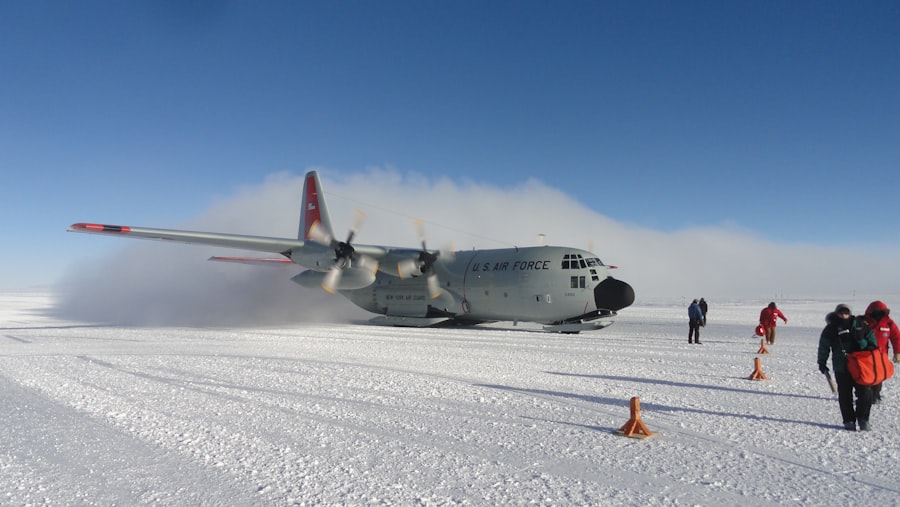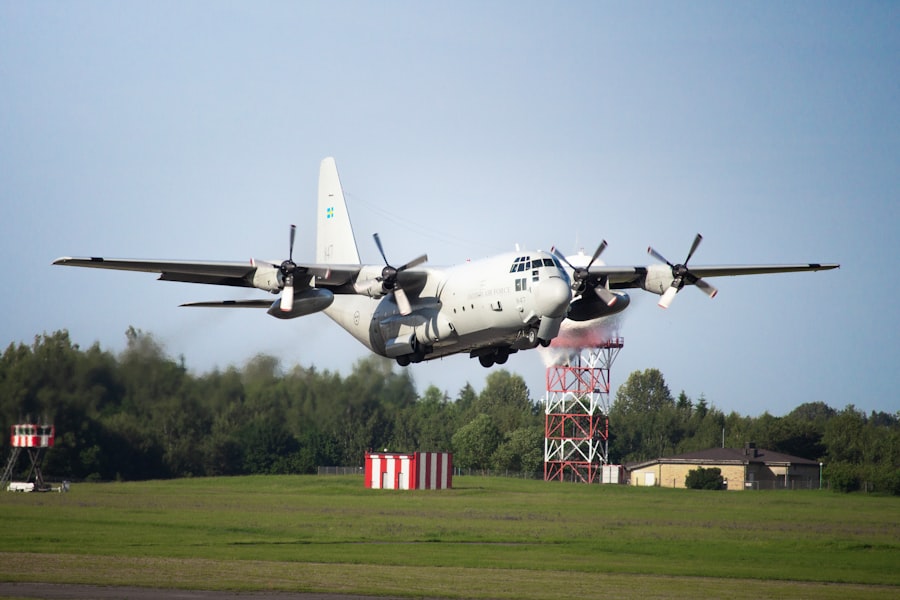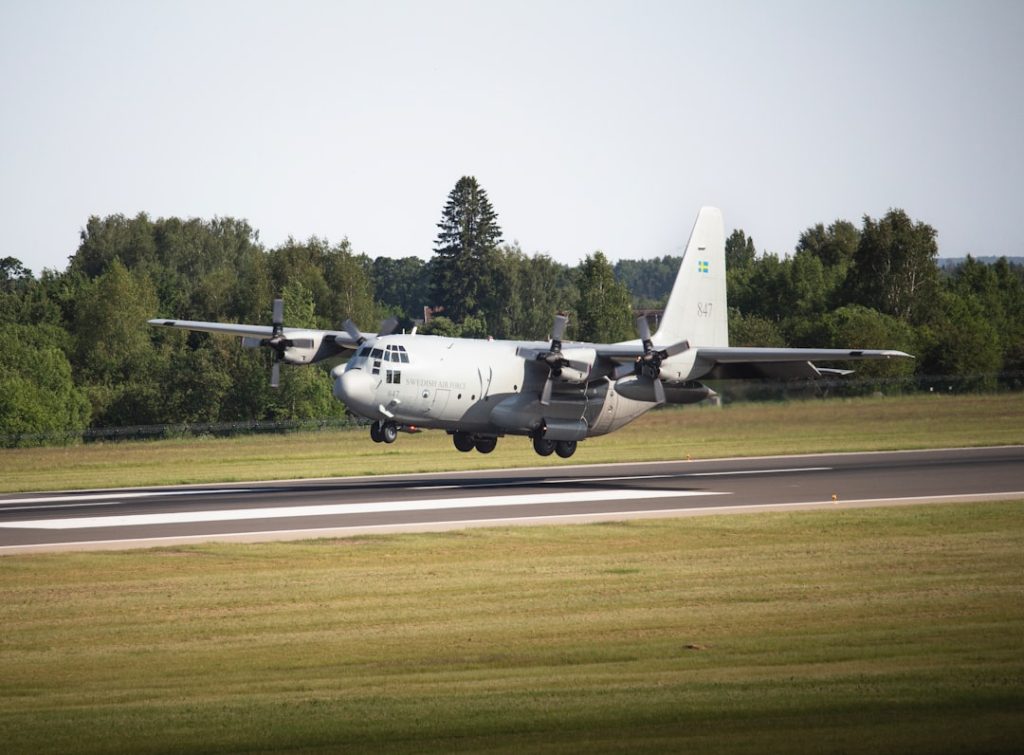The Lockheed C-130 Hercules stands as one of the most versatile and enduring aircraft in military aviation history. Designed primarily as a tactical airlifter, the C-130 has proven itself capable of performing a wide array of missions, from troop transport to humanitarian aid, and even aerial refueling. Its distinctive design, characterized by a high-wing configuration and four turboprop engines, allows it to operate from short and unpaved airstrips, making it an invaluable asset in both combat and peacetime operations.
The C-130’s adaptability has earned it the nickname “military workhorse,” reflecting its reliability and effectiveness in various roles across the globe. Since its introduction in the 1950s, the C-130 has undergone numerous modifications and upgrades, ensuring that it remains relevant in an ever-evolving battlefield landscape. Its ability to perform in diverse environments—from arctic conditions to desert terrains—has made it a favorite among air forces worldwide.
The aircraft’s storied history is marked by its participation in significant military operations, humanitarian missions, and disaster relief efforts, solidifying its reputation as a cornerstone of military logistics and support.
Key Takeaways
- The C-130 is a versatile military aircraft known for its reliability and adaptability in various missions and roles.
- Developed in the 1950s, the C-130 has a rich history and has undergone several upgrades and modernizations to keep up with evolving military needs.
- Key features of the C-130 include its ability to operate from unprepared airstrips, its cargo capacity, and its aerial refueling capability.
- The C-130 is used for a wide range of missions, including airlift, air-to-air refueling, firefighting, and humanitarian aid.
- The C-130 has made a global impact and is deployed by numerous countries for both military and humanitarian operations, showcasing its enduring legacy.
History and Development of the C-130
The genesis of the C-130 can be traced back to the early 1950s when the United States Air Force sought a new tactical airlift aircraft that could operate in austere environments. Lockheed Martin was awarded the contract to develop this aircraft, leading to the first flight of the prototype, the YC-130, on August 23, 1954. The design was revolutionary for its time, featuring a high-wing configuration that allowed for better ground clearance and improved cargo loading capabilities.
The aircraft was officially introduced into service in 1956, quickly becoming a staple of military airlift operations. Throughout its development, the C-130 has seen numerous variants tailored for specific missions. From the original C-130A model to the more advanced C-130J Super Hercules, each iteration has incorporated technological advancements that enhance performance and capabilities.
The aircraft has been utilized in various conflicts, including the Vietnam War, where its ability to deliver troops and supplies directly into combat zones proved crucial. Over the decades, the C-130 has evolved not only in terms of technology but also in its operational roles, adapting to meet the changing needs of military strategy.
Key Features and Capabilities of the C-130

One of the defining features of the C-130 is its remarkable versatility. The aircraft can carry a wide range of cargo, including troops, medical supplies, vehicles, and even larger equipment like helicopters. With a maximum payload capacity of approximately 45,000 pounds, it can accommodate various mission requirements.
The spacious cargo hold is equipped with a ramp that allows for rapid loading and unloading, facilitating quick turnaround times during operations. In addition to its cargo capabilities, the C-130 is equipped with advanced avionics and navigation systems that enhance its operational effectiveness. Modern variants feature glass cockpits with digital displays, improving situational awareness for pilots.
The aircraft’s turboprop engines provide excellent fuel efficiency and allow for short takeoff and landing capabilities, making it ideal for operations in remote locations. Furthermore, the C-130 can be fitted with specialized equipment for missions such as aerial firefighting or medical evacuation, showcasing its adaptability to various operational needs.
Various Missions and Roles of the C-130
| Mission/Role | Description |
|---|---|
| Airlift | Transporting troops, cargo, and equipment to remote locations |
| Airborne Assault | Inserting and extracting troops and equipment in hostile environments |
| Air-to-Air Refueling | Refueling other aircraft in mid-air to extend their range and endurance |
| Search and Rescue | Locating and rescuing personnel in distress, often in combat zones |
| Firefighting | Dropping water or fire retardant to combat wildfires |
The C-130 Hercules is renowned for its multifaceted roles within military operations. One of its primary functions is tactical airlift, where it transports troops and supplies directly to forward operating bases or combat zones. This capability is critical during military campaigns where rapid deployment of forces can significantly impact operational success.
The aircraft’s ability to land on short and unpaved runways allows it to reach areas that larger aircraft cannot access. Beyond troop transport, the C-130 has been employed in humanitarian missions worldwide. Its capacity to deliver food, water, and medical supplies during natural disasters has made it an essential asset for disaster relief efforts.
For instance, during Hurricane Katrina in 2005, C-130s were instrumental in delivering aid to affected regions in the United States. Additionally, the aircraft has been adapted for aerial firefighting missions, equipped with specialized tanks that can drop fire retardant on wildfires, demonstrating its versatility beyond traditional military roles.
Global Impact and Deployment of the C-130
The global impact of the C-130 Hercules extends far beyond its use by the United States Air Force. Over 70 countries have adopted this aircraft into their fleets, making it one of the most widely used military transport aircraft in history. Its reliability and performance have made it a preferred choice for nations looking to enhance their airlift capabilities.
Countries such as Australia, Canada, and India have successfully integrated the C-130 into their military operations, utilizing it for both combat support and humanitarian missions. The deployment of the C-130 has been pivotal in various international conflicts and peacekeeping operations. For example, during NATO operations in Afghanistan, C-130s played a crucial role in transporting troops and supplies to remote bases throughout the country.
Their ability to operate from austere airfields allowed coalition forces to maintain logistical support even in challenging environments. Furthermore, the aircraft’s presence in humanitarian crises—such as delivering aid during earthquakes or floods—has solidified its reputation as a reliable partner in global disaster response efforts.
Upgrades and Modernization of the C-130

As military needs evolve and technology advances, so too has the C-130 Hercules undergone significant upgrades and modernization efforts. The introduction of the C-130J Super Hercules marked a substantial leap forward in terms of performance and capabilities. This variant features upgraded engines that provide increased power and fuel efficiency while reducing maintenance costs.
Additionally, modern avionics systems enhance navigation accuracy and situational awareness for pilots. The modernization process does not stop with new variants; existing fleets are also being upgraded to extend their operational life and improve performance. Many air forces have invested in retrofitting older models with advanced communication systems, improved cargo handling equipment, and enhanced defensive systems to protect against modern threats.
These upgrades ensure that even legacy models remain effective in contemporary operational environments.
Future Prospects and Innovations for the C-130
Looking ahead, the future prospects for the C-130 Hercules appear promising as military aviation continues to adapt to new challenges. Ongoing research into unmanned aerial systems (UAS) may lead to innovations that integrate drone technology with traditional airlift capabilities. Concepts such as using drones for reconnaissance or supply delivery could complement manned operations conducted by C-130s.
Moreover, advancements in materials science may lead to lighter yet stronger components for future iterations of the C-130. This could enhance fuel efficiency further while maintaining structural integrity under demanding conditions. As militaries around the world continue to prioritize rapid response capabilities and logistical flexibility, innovations surrounding the C-130 will likely play a crucial role in shaping future airlift strategies.
The Enduring Legacy of the C-130
The Lockheed C-130 Hercules has established itself as an enduring symbol of military aviation excellence through decades of service across various missions and roles. Its remarkable adaptability has allowed it to thrive in diverse environments while meeting the evolving needs of armed forces worldwide. As technological advancements continue to reshape military operations, the legacy of the C-130 will undoubtedly endure as it remains a vital component of airlift capabilities for years to come.
The aircraft’s storied history is not just a testament to its engineering prowess but also reflects its significant contributions to humanitarian efforts and global security initiatives throughout its operational lifespan.


